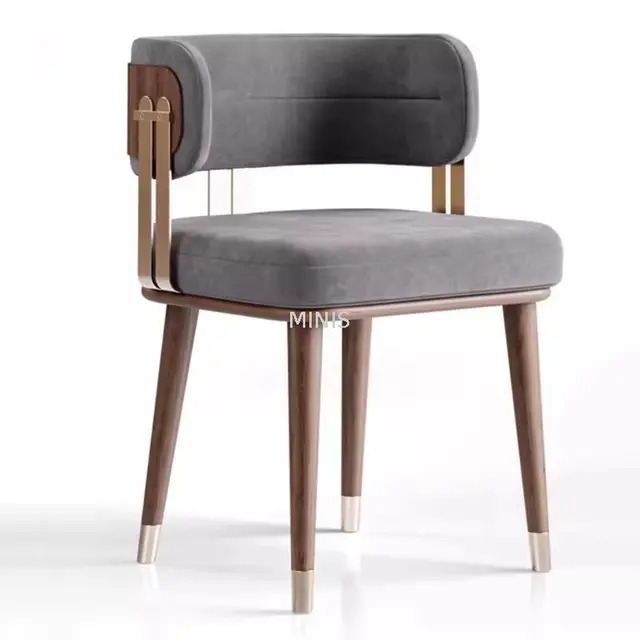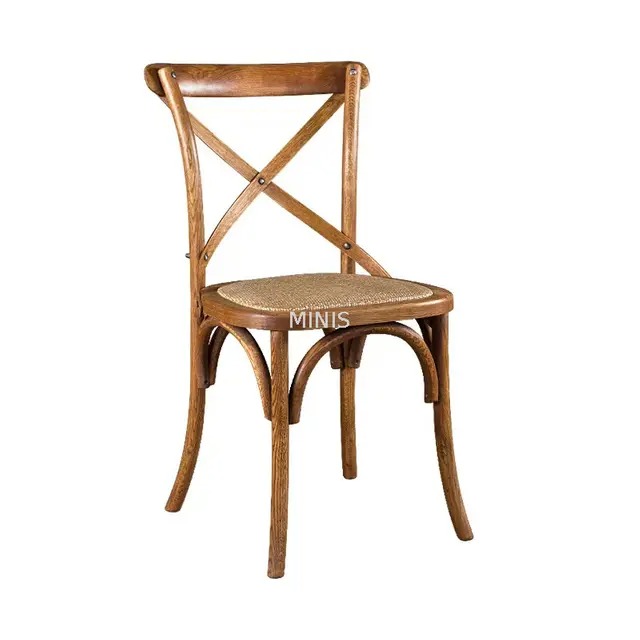Views: 215 Author: Site Editor Publish Time: 2025-10-02 Origin: Site








A dining room often serves as the heart of a home, where family meals, holiday gatherings, and celebrations take place. While many homeowners once preferred perfectly matching furniture sets, the modern approach to dining design has shifted toward creativity, individuality, and flexibility. Mixing and matching dining chairs is a powerful way to express personal style, create visual interest, and make the dining space feel dynamic rather than formulaic. However, without the right guidance, the result can easily look chaotic instead of curated. This article provides a comprehensive guide on how to mix and match dining chairs, exploring strategies, design principles, and practical examples that help transform a dining area into a cohesive, stylish, and inviting space.
Traditional dining sets often feel predictable, while mixing chairs allows for customization and a sense of personality. The main benefit is flexibility: homeowners can blend old and new, high-end and budget pieces, or even repurpose heirlooms alongside contemporary designs. This strategy also solves practical issues, such as replacing one broken chair without buying an entirely new set. Moreover, a mix-and-match arrangement can better reflect evolving lifestyles, where open-plan living requires furniture to transition smoothly between formal and casual uses. By combining different dining chairs, you can avoid a “showroom look” and instead create a dining area that feels layered, authentic, and unique.

Achieving a balanced look requires more than placing random seats around a table. Successful styling follows key design principles:
Unifying Element: Choose a common thread such as color palette, material, or shape that ties everything together.
Contrast with Control: Balance differences so no single chair feels isolated.
Scale and Proportion: All dining chairs should sit comfortably at the table and align in seat height, even if their designs differ.
Repetition: Introduce recurring features like wood tone, metal finish, or upholstery pattern to establish rhythm.
| Principle | Description | Example in Practice |
|---|---|---|
| Unifying Element | Choose one visual anchor | All chairs share black legs despite different backs |
| Contrast with Control | Balance bold and subtle | Two upholstered seats offset by four wooden chairs |
| Scale and Proportion | Ensure comfort & function | Seat heights between 17–19 inches |
| Repetition | Repeat subtle details | Cane texture echoed in two different chair frames |
Applying these principles ensures your dining arrangement feels deliberate, not accidental.
Material plays a major role in setting the mood of a dining space. Wooden chairs exude warmth and tradition, while metal or acrylic dining chairs create a sleek, modern edge. Upholstered chairs add softness and comfort, often working well at the head of the table. The trick is to mix textures without overwhelming the eye. For example, pairing oak with black steel provides contrast but remains harmonious if both share clean, minimal lines. Similarly, mixing rattan with velvet works if you repeat either tone elsewhere in the room, such as a rug or lighting fixture. Thoughtful blending of materials allows for both comfort and character.
Color is one of the most noticeable aspects of dining chairs and can either unify or disrupt a design. The safest strategy is to choose a dominant color palette—neutrals like white, black, or natural wood—and add pops of color sparingly. A monochrome palette with subtle variations in chair design often feels modern and chic, while a bold palette with multiple shades works best in eclectic or bohemian interiors. Another effective approach is to anchor the table with two statement chairs in a standout color, then surround them with simpler tones.
| Color Strategy | Application | Visual Impact |
|---|---|---|
| Monochrome | Black, gray, and charcoal chairs | Minimalist and cohesive |
| Accent Pair | Two emerald green upholstered chairs at the ends | Adds drama without chaos |
| Eclectic Mix | Four different pastel tones | Playful and artistic |
Choosing colors thoughtfully ensures your mixed dining chairs feel intentional rather than mismatched.
Shape strongly influences how a dining setup is perceived. Rounded-back dining chairs feel softer and more traditional, while angular lines project modernity. Mixing these shapes is possible if proportions align and materials repeat. For example, pairing Windsor-style chairs with sleek Scandinavian ones works if both are wooden and finished in complementary stains. Similarly, industrial metal chairs can coexist with farmhouse wooden ones if united by color. The goal is not to eliminate contrast but to ensure a dialogue between forms, so the variety enhances the table rather than competes with it.
How dining chairs are positioned around the table determines the overall effect. Symmetry—placing identical chairs opposite each other—creates order and balance, while asymmetry offers a more casual and artistic feel. A common approach is to place matching chairs along the sides and contrasting ones at the ends, giving a sense of hierarchy. Alternatively, rotating styles in a repeating sequence prevents randomness. Whichever method you choose, consistency in spacing and seat height keeps the setup comfortable and visually stable.

Mixed dining chairs can adapt to a wide range of interior styles when done strategically:
Modern Farmhouse: Combine spindle-back wooden chairs with slipcovered upholstered seats.
Mid-Century Modern: Blend molded plastic dining chairs with walnut frames and tapered legs.
Industrial Loft: Pair metal Tolix chairs with reclaimed wood benches.
Scandinavian Minimalism: Mix light oak ladder-back chairs with white molded seats.
| Style | Chair Mix Example | Key Visual Feature |
|---|---|---|
| Modern Farmhouse | Spindle + slipcover | Rustic warmth with comfort |
| Mid-Century Modern | Molded plastic + walnut frame | Clean lines, organic shapes |
| Industrial Loft | Metal + reclaimed wood | Rugged textures |
| Scandinavian Minimalism | Oak + white molded | Light and airy simplicity |
Identifying your preferred style helps narrow down the right mix of dining chairs and prevents design overwhelm.
Mixing dining chairs doesn’t need to be expensive. Shopping secondhand allows you to find unique pieces at lower costs, while online retailers often sell single chairs instead of full sets. Before purchasing, always measure seat height to ensure consistency. If you’re blending vintage and new, consider refinishing wood tones or reupholstering fabrics for cohesion. Another budget-friendly tactic is to invest in two statement chairs and fill the rest with simpler, more affordable options. Planning a budget ahead of time ensures your design goals align with financial comfort.
Mixing and matching dining chairs offers an opportunity to break free from rigid furniture sets and design a dining room that reflects both personality and practicality. By following principles of balance, proportion, color harmony, and style cohesion, you can achieve a look that feels both creative and intentional. Whether you lean toward farmhouse warmth, mid-century sleekness, or eclectic boldness, the right blend of dining chairs can elevate your dining space into an area that invites conversation, comfort, and lasting memories.
Q1: Can I mix dining chairs of different heights?
It’s best to keep seat heights within 1–2 inches of each other to maintain comfort and visual harmony.
Q2: How many styles of dining chairs can I mix together?
Two to three styles usually strike the right balance—enough variety for interest without overwhelming the space.
Q3: Do all dining chairs need armrests?
No. Armchairs are often reserved for the ends of the table, while armless chairs save space along the sides.
Q4: What table works best with mixed dining chairs?
Simple, versatile tables—like solid wood or metal-framed options—work best, as they provide a neutral anchor for diverse chairs.
Q5: Can I use benches with dining chairs?
Yes. Benches pair well with a set of chairs on the opposite side, offering flexibility and a more casual look.